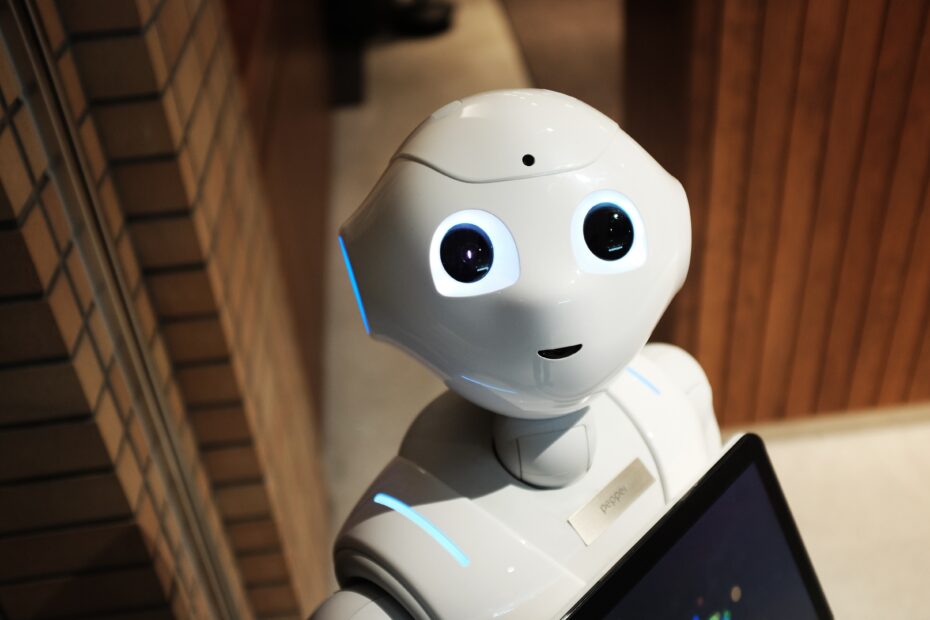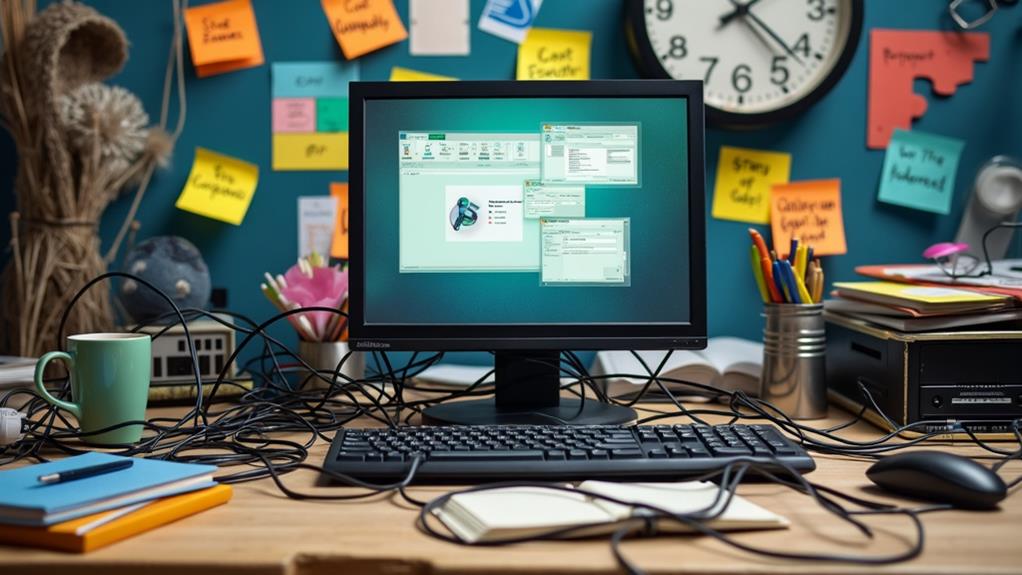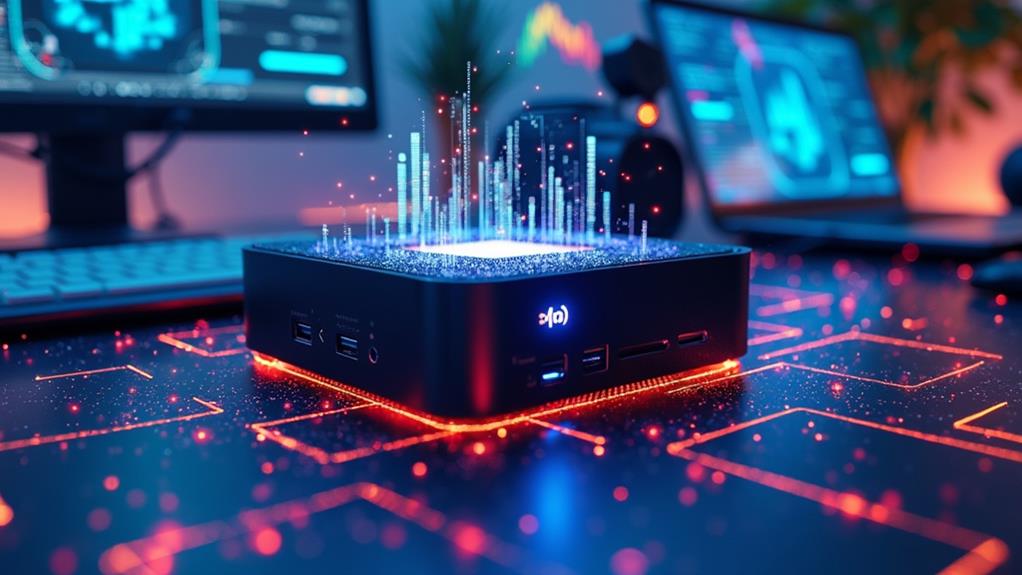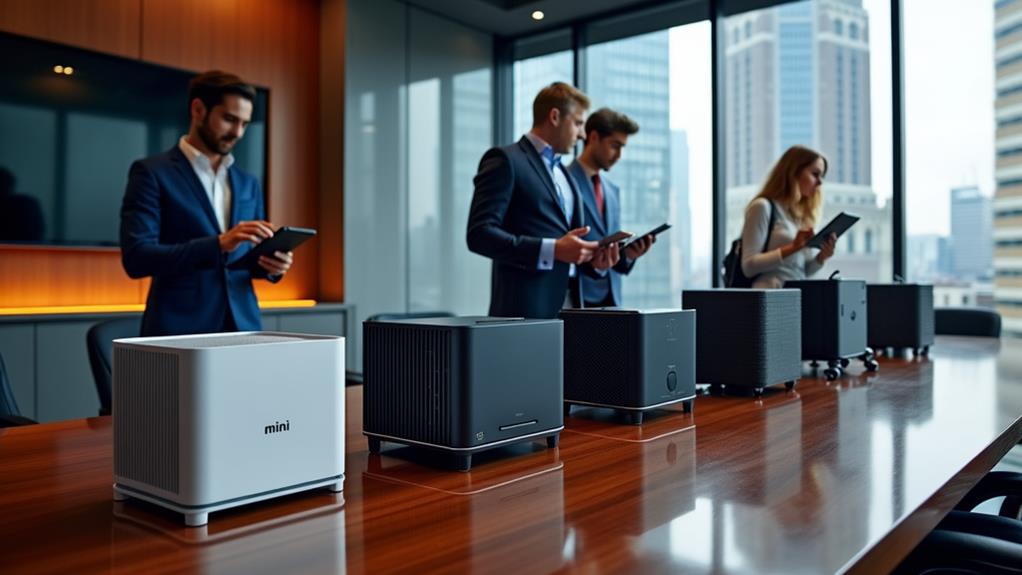



If you’ve recently acquired a mini PC, you might be wondering whether a monitor is a necessary addition to your setup. After all, mini PCs are designed to be compact and portable, so it’s natural to question whether you really need a separate display. In this article, we’ll explore the importance of having a monitor for your mini PC and how it can enhance your overall computing experience. So, let’s dive in and find out if a monitor is a must-have for your mini PC or merely an optional accessory.

Understanding the Mini PC
Definition of Mini PC
A mini PC, also known as a small form factor PC, is a compact and portable computer that is designed to perform most of the functions of a traditional desktop computer while taking up minimal space. These devices are significantly smaller and lighter than regular desktop computers, making them an ideal choice for those who require a computer on the go or who have limited space.
Components of Mini PC
A mini PC typically consists of the following components:
Processor: The central processing unit (CPU) is the “brain” of the mini PC, responsible for executing instructions and performing calculations.
Memory: Also known as RAM (Random Access Memory), the memory component of a mini PC stores data that is being actively used by the CPU. Higher memory capacity allows for smoother multitasking and faster data processing.
Storage: Mini PCs usually have solid-state drives (SSD) or hard disk drives (HDD) for storing data, programs, and the operating system.
Graphics Card: The graphics card, also known as a video card, is responsible for rendering images and videos on the screen.
Connectivity: Mini PCs come with various connectivity options such as USB ports, HDMI ports, Ethernet ports, and Wi-Fi, allowing users to connect peripherals and access the internet.
Operating System: Mini PCs run on popular operating systems like Windows, macOS, and Linux, providing a user-friendly interface.
Functions of Mini PC
Mini PCs are versatile devices that can fulfill a range of functions:
Office Work: With their compact size and powerful processors, mini PCs are perfect for office work such as word processing, spreadsheet management, and presentations.
Multimedia and Entertainment: Mini PCs can handle multimedia tasks such as streaming videos, playing music, and running graphic-intensive applications. They can also be connected to TVs, projectors, or audio systems to enhance the entertainment experience.
Home Theater PC (HTPC): Due to their small size and multimedia capabilities, mini PCs can be transformed into HTPCs, serving as a media center for streaming movies, TV shows, and music.
Digital Signage: Mini PCs are widely used in commercial settings for digital signage, displaying advertisements, menus, and other promotional content on screens in stores, restaurants, and public spaces.
Gaming: While mini PCs may not have the same level of graphic capabilities as gaming PCs, they can still handle a wide range of casual gaming and less demanding titles, providing an affordable gaming option for casual gamers.
The Role of a Monitor in a Computer System
Definition and function of a Monitor
A monitor, also commonly referred to as a display or screen, is an output device that visually presents the processed information and graphical content from a computer. It allows users to view applications, documents, videos, images, and other visual content in a user-friendly format.
The primary function of a monitor is to provide visual feedback to the user, displaying the output of the computer’s operating system, programs, and applications. It is an essential component of a computer system and plays a vital role in user interaction with the device.
Types of Monitors
Monitors come in various types, each offering different features and suitability for specific purposes:
LCD (Liquid Crystal Display): LCD monitors are the most common type of monitor in use today. They offer good color reproduction, sharp images, and energy efficiency. LCD monitors are available in different sizes, ranging from small screens for laptops to large displays for desktop computers.
LED (Light Emitting Diode): LED monitors are a type of LCD monitor that uses light-emitting diodes for backlighting instead of traditional fluorescent lights. LED monitors provide improved color accuracy, higher brightness levels, and energy efficiency compared to LCD monitors.
Curved Monitors: Curved monitors are designed to provide an immersive viewing experience by wrapping the screen around the viewer’s field of vision. They can enhance the perception of depth and create a more engaging visual experience.
Ultra-wide Monitors: Ultra-wide monitors have a wider aspect ratio than regular monitors, providing a wider horizontal screen space. They are particularly useful for multitasking, as they allow users to have multiple windows or applications open simultaneously.
Importance of Monitors to users
Monitors play a crucial role in the overall user experience and productivity of a computer system. Here are some significant reasons why monitors are essential:
Visual Clarity: Monitors with high resolution and color accuracy provide clear and vibrant visuals, making it easier to read text, view images, and watch videos without straining your eyes.
Ergonomics: Monitors with adjustable stands or mounts allow users to position the screen at a comfortable eye level, reducing the risk of neck and eye strain associated with poor monitor placement.
Productivity: A larger monitor or multiple monitors can significantly enhance productivity by allowing users to have multiple applications or documents open simultaneously, reducing the need for constant switching between screens.
Gaming and Entertainment: Monitors with high refresh rates and low response times are essential for gamers, as they provide smooth and immersive gaming experiences. Additionally, larger screens and higher resolutions enhance the visual experience when watching movies or streaming content.
Professional Work: Certain professions, such as graphic design, video editing, and photography, require monitors with accurate color reproduction and wide color gamut to ensure accurate representation of colors and details in visual content.
Using a Mini PC Without a Monitor: Is It Possible?
Remote Control and Screen Sharing Applications
While using a mini PC without a monitor may seem inconvenient, it is indeed possible, thanks to remote control applications and screen sharing technologies. Remote control applications allow users to access and operate their mini PC remotely from another device such as a laptop, tablet, or smartphone.
These applications leverage network connectivity to establish a connection between the mini PC and the remote device, essentially turning the remote device into a virtual monitor. Users can control the mini PC, view the screen, and interact with applications and files as if they were directly connected to a physical monitor.
Command Line Interface methods
Another option for using a mini PC without a monitor is through command line interface (CLI) methods. A CLI allows users to interact with the mini PC using text-based commands entered through a keyboard. CLI methods provide a means of controlling and managing the mini PC’s functions without the need for a graphical user interface (GUI) provided by a monitor.
While using a CLI may seem less intuitive for those accustomed to graphical interfaces, it is a viable option for advanced users, system administrators, or those proficient in command-line operations.
Limitations of using a Mini PC without a Monitor
Although it is possible to use a mini PC without a monitor using remote control applications or CLI methods, there are some limitations to consider:
Limited Visual Experience: Without a physical monitor, the visual experience may be compromised. Certain applications, such as video editing or graphic design software, may require precise visual feedback that can only be achieved through a dedicated monitor.
Hardware Configuration: Some mini PCs may require a monitor to access the BIOS or perform initial setup and configuration. Without a monitor, these tasks may become challenging or impossible to perform.
Compatibility Issues: Certain remote control applications may not be compatible with all mini PCs or may require additional setup or configuration steps. Compatibility issues could limit the functionality or performance of the remote control solution.
Dependency on Remote Device: When using remote control applications, the functionality of the mini PC may be limited by the capabilities and performance of the remote device. Connectivity issues or constraints of the remote device could impact the user experience.
Why You Might Need a Monitor for Your Mini PC
While using a mini PC without a monitor is possible, there are several compelling reasons why you might still want to consider using a monitor with your mini PC.
Enhancement of user interface
A monitor provides a dedicated visual interface for your mini PC, offering a more user-friendly and immersive experience compared to remote control or CLI methods. With a larger screen size and high-resolution display, you can better appreciate visuals, read text comfortably, and navigate through applications more efficiently.
Improving productivity
Using a monitor with your mini PC can significantly enhance productivity by providing a larger workspace and allowing for better multitasking. With a multi-monitor setup, you can have multiple applications or documents open simultaneously, reducing the need for constant switching between screens. This is particularly beneficial for professionals who work with multiple Windows, files, or applications simultaneously.
Entertainment and gaming
If you plan to use your mini PC for entertainment purposes, such as watching movies, streaming content, or playing games, a monitor is an essential component. Monitors with high refresh rates, low response times, and larger screen sizes can greatly enhance the visual experience and immersion while gaming or enjoying multimedia content.
Ease of navigation
While remote control applications and CLI methods provide alternative means of accessing and controlling your mini PC, they may not offer the same level of ease and convenience as a dedicated monitor. Having a physical monitor allows for more intuitive navigation, precise control, and immediate visual feedback, making it easier to perform tasks and interact with applications.
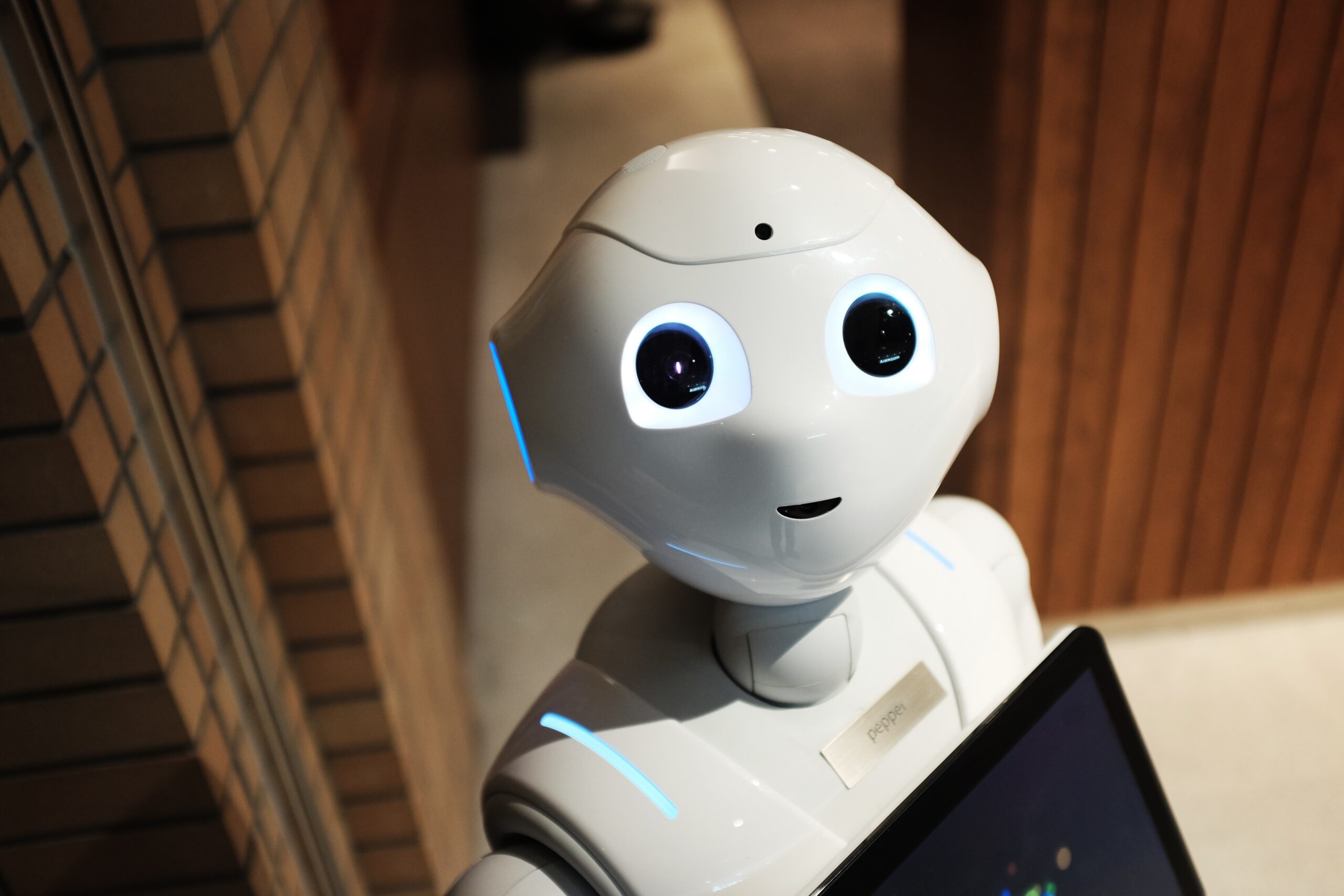
Choosing the Right Monitor for Your Mini PC
When selecting a monitor for your mini PC, several factors should be considered to ensure optimal compatibility and performance:
Understanding resolution and screen size
The resolution and screen size of a monitor play essential roles in determining the visual experience.
Resolution: Higher resolutions, such as 1080p (Full HD), 1440p (Quad HD), or 4K (Ultra HD), offer sharper and more detailed visuals. Consider the capabilities of your mini PC’s graphics card and your specific needs when choosing a resolution.
Screen Size: Larger screen sizes provide a more immersive experience and ample workspace, but they may require higher resolutions to maintain image clarity. Consider the available space and viewing distance for the monitor to find a screen size that suits your needs.
Budget considerations
Monitors are available in a wide range of prices, and setting a budget beforehand can help narrow down the options. Consider the features and specifications you require and balance them with your budgetary constraints.
Evaluating compatibility with Mini PC
Ensure that the monitor you choose is compatible with your mini PC in terms of connectivity options and required cables. Check the available ports on your mini PC, such as HDMI, DisplayPort, or DVI, and make sure the monitor has corresponding ports for seamless connectivity.
Setting Up a Monitor With a Mini PC
Once you have chosen the right monitor for your mini PC, the following steps will guide you through the setup process:
Guide on Connecting Hardware
Power Off: Turn off both the mini PC and the monitor.
Connect Cables: Use the appropriate cable (HDMI, DisplayPort, DVI, etc.) to connect the mini PC’s video output port to the corresponding input port on the monitor.
Power On: Plug the monitor’s power cable into a power outlet and switch it on.
Power On Mini PC: Turn on the mini PC and wait for the operating system to boot up.
Installing Necessary Drivers
In most cases, modern operating systems will automatically detect and install the necessary drivers for the monitor. However, if the monitor-specific drivers are not installed automatically, you can visit the manufacturer’s website and download the appropriate drivers.
Adjusting Display Settings
Once the monitor is connected and the drivers are installed, you may need to adjust the display settings to optimize the visual experience. This can be done through the operating system’s display settings menu, where you can customize resolution, brightness, contrast, color calibration, and other visual settings according to your preferences.

Alternative Display Options for Mini PC
While monitors are the most common and recommended display option for mini PCs, there are alternative solutions available:
Using a Television as a Monitor
If you have a compatible television with HDMI or other video input ports, it can serve as a display for your mini PC. However, keep in mind that TVs are optimized for viewing content from a distance and may not provide the same visual clarity and responsiveness as dedicated computer monitors, especially for tasks that require precise visual feedback.
Potential of Projectors
Projectors can be a unique and space-saving solution for displaying content from a mini PC. With a projector, you can project the computer’s display onto a wall or screen, creating a large visual experience. However, they may require additional setup and adjustment, and the image quality may vary depending on the projector’s specifications.
Smartphone and Tablet as Screen
For quick and temporary setups, you can use your smartphone or tablet as a makeshift screen for your mini PC. Some applications allow you to connect your mini PC to a mobile device and use it as a secondary screen. While this option may not provide the same visual experience as a dedicated monitor, it can be useful in certain situations.
The Impact of a Monitor on Mini PC’s Performance
Influence on system resources
Using a monitor with your mini PC has minimal impact on system resources, as the monitor primarily acts as an output device. The majority of system resources, such as CPU, memory, and storage, are used for processing tasks and running applications. However, running high-resolution displays or multiple monitors may slightly increase the demand on the graphics card and utilize additional system resources.
Effect on power consumption
The power consumption of a mini PC is primarily determined by the components inside the computer itself, such as the processor, graphics card, and storage. The monitor’s power consumption is additional to the mini PC’s power consumption. Choosing an energy-efficient monitor and adjusting its brightness and power-saving settings can help reduce overall power consumption.
Impact on space utilization
While mini PCs are already designed to save space, adding a monitor does require additional physical space. However, using a monitor stand or mounting the monitor on the wall can help optimize space utilization. Additionally, some monitors come with built-in USB hubs or other connectivity options, allowing you to connect peripherals directly to the monitor, reducing cable clutter and optimizing desk space.
Maintaining Your Monitor and Mini PC
To ensure the longevity and optimal performance of your monitor and mini PC, here are some maintenance practices to consider:
Routine check-ups
Regularly check the connections, cables, and ports between the monitor and the mini PC to ensure they are secure and in good condition. Inspect the monitor for any physical damage or abnormalities in the display. Similarly, monitor the performance of the mini PC, including temperature, fan operation, and software updates.
Software Updates
Keep both the monitor’s firmware and the mini PC’s operating system up to date with the latest software updates. These updates often include improvements in performance, security patches, and bug fixes.
Cleanliness and Dust Prevention
Clean the monitor’s screen using a microfiber cloth and a gentle cleaning solution specifically designed for monitors. Avoid using harsh chemicals or abrasive materials that could damage the screen. Regularly clean the mini PC’s exterior and ensure proper air circulation to prevent dust accumulation, which can affect performance and cause overheating.
Conclusions: Do You Need a Monitor for a Mini PC?
After considering all the factors, it is evident that having a monitor for your mini PC offers numerous advantages in terms of usability, visual experience, productivity, and compatibility. While it is technically possible to use a mini PC without a monitor using remote control or CLI methods, the overall user experience may be compromised.
Summarizing the pros and cons:
Pros of using a monitor:
- Enhanced visual experience and user interface
- Improved productivity and multitasking
- Ideal for gaming, entertainment, and professional work
- Easier navigation and control
Cons of not using a monitor:
- Limited visual experience and compromised functionality
- Possible compatibility issues and dependency on remote devices
- Inability to perform certain tasks requiring visual feedback
Ultimately, the need for a monitor depends on the specific use case, personal preferences, and budget considerations. If you value a seamless and immersive computing experience, investing in a monitor is highly recommended. However, if space constraints, budget limitations, or specific usage scenarios dictate otherwise, alternative solutions like remote control applications or CLI methods can be explored.
Disclosure: As an Amazon Associate, I earn from qualifying purchases.
